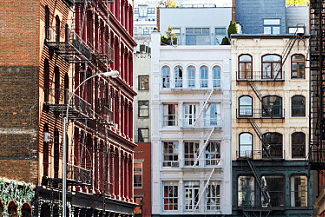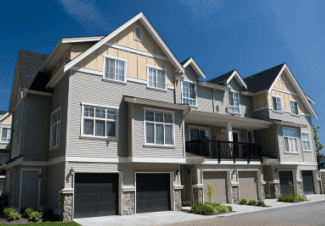NYC Apartment Rents Break Records Again As Housing Crisis Deepens
Rents continued to shatter records last month, tipping New York even deeper into a housing crisis that shows no signs of easing anytime soon.
“You could almost say we’re in a record number of records,” appraisal firm Miller Samuel CEO Jonathan Miller told Bisnow Thursday. “This spring leading through the summer has been unprecedented rise on an unprecedented rise.”

The vacancy rate is at 2% in Manhattan, and just 12.8% of the leases signed included a concession. Last July, nearly 40% of signed leases included some form of free rent deal.
This time two years ago, it was not uncommon for landlords to offer as much as three months free on leases in order to entice renters to sign in the city. But rents are now on a tear, with median rent in Manhattan setting a record for the sixth month in a row, hitting $4,150 per month.
The story is the same in the boroughs. The median rent in Brooklyn ended July at a record $3,400, an 18% jump year-over-year. In Queens, the median rent hit $3,129, a 16% increase on last year, and listing inventory is down 83%.
“The rents have been rising for more than a year, but they took a much more significant jump between March and April — which is right when the Fed started their pretty significant effort trying to beat the economy with a baseball bat,” Miller said.
New York is feeling the same pressure as rental markets across the country, as more would-be homeowners are forced to stay as renters because of increased interest rates.
Right now, the Federal Reserve’s benchmark rate now sits in the 2.25%-2.5% range, higher than at any point since the Great Financial Crisis. Inflation slowed last month, although that was largely driven by the drop in gas prices, and it is unclear how aggressively the Fed will continue to raise rates.
The number of renters seeing huge rate increases at re-signing have dominated headlines for months now, as many around the city who scored pandemic-era deals face a starkly different market. But Miller said those eye-popping increases could be moderating.
“We get the impression that they’re starting to rein it in a bit in terms of what they’re asking, if you look at it broadly speaking across the market rather than individual examples,” Miller said.
But while the impact is stark in New York City, rent hikes are afflicting tenants around the country.

Panelists at the event said the lack of affordability is at crisis levels, and with a slew of challenges making the problem even harder to fix. Construction costs are soaring, land prices remain high, and industry leaders said recent political decisions are hampering their ability to get more housing built.
“We are in for a rough ride,” said Louise Carroll, a former commissioner of the New York City Department of Housing Preservation and Development and now a partner at Katten Muchin Rosenman.
Carroll pointed to the state legislature’s decision to allow the J-51 tax break on renovations to lapse, the rent stabilization laws passed in 2019 and the expiration of the 421-a tax break, which developers have said will cripple the production of all types of rental housing in the city.
“And we have an administration that is no longer pushing rezonings,” she added.
She said many of the new apartment buildings in Greenpoint, Williamsburg and Hudson Yards were all the result of neighborhood rezonings under former mayors Michael Bloomberg and Bill de Blasio. Mayor Eric Adams hasn’t moved to make any major land use changes in his first year in office.
“I think there needs to be a national rental assistance program that is not Section 8 that really does fill the gap for tenants,” Carroll said.
BRP Cos. Managing Director Andy Cohen agreed a subsidy would go a long way in easing the pressure on renters, but that won’t change the reality that it has become more challenging for developers to piece together affordable housing deals.
“Because there’s so little [net operating income] on those deals, because your [expeditures are] high and/or your rents are low, they’re really hard to put traditional equity into, so they’re tax credit equity deals. And so you’re really relying on tax credits, bonds and subsidies,” he said. “Those are all scarce.”
He said while BRP traditionally built in core New York transit-oriented areas, it is now developing in Westchester County, where the firm has some 1,000 units in pre-development.
Miller said there is no reason to think rents in the city will come down soon, with economic distress the only thing likely to bring about any swift change.
“The bigger question that remains is: What happens to rent after peak leasing season in August? And that’s quite unknown. It depends on whether we’re going to go into a recession or where we have employment loss,” he said.
“I mean, in many ways, that’s the only way I can see rents coming down. I like to say that the opposite of rising rents is not falling rents, it is stabilizing rents. That’s probably the next phase: a lower rate of growth. But that’s certainly not definite.”
Source: Bisnow















 Accessibility
Accessibility